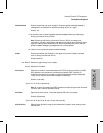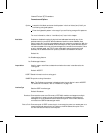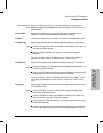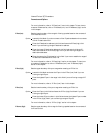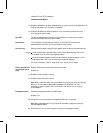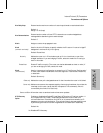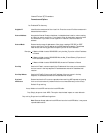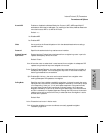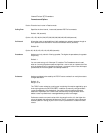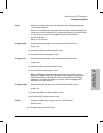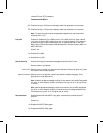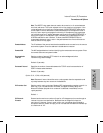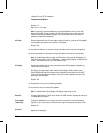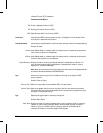
Normal ARP
Enables or disables the Address Resolution Protocol (ARP). ARP maps 32-bit IP
addresses to 48-bit station addresses. For enabling to take effect, Address Resolution
must also be set to ARP or to ARP & HP Probe.
Default: Yes
No
Disables ARP
Yes
Enables ARP.
Offset
Use to position the filtered bit pattern within the selected header when creating a
user-defined filter.
Password
Specifies the authentication key used across an interface.
Poisoned Reverse/
Split Horizon
Determines how IP advertises routes learned from a neighboring router in periodic
updates subsequently sent to the router.
Default: Poison
None
Allows the router to advertise all routes learned from a neighbor in subsequent RIP
updates using the actual hop count assigned to the routes.
Poison
Enables Poisoned Reverse—the router advertises routes learned from a neighbor in
subsequent RIP updates. The router assigns a hop count of 16 to these routes, thus
declaring the destinations unreachable.
Split
Enables Split Horizon—the router omits routes learned from a neighbor when
sending subsequent RIP updates to the neighbor.
Polling Mode
Specifies one of two neighbor-reachability algorithms. In the active mode, the router
issues periodic Hello and Poll commands. Neighbor-reachability is verified by receipt
of corresponding “I hear you” (I-H-U) and Update responses. In the passive mode,
the router does not issue Hello commands; nor does it expect I-H-U responses.
Neighbor-reachability is verified by examining the Status field of the received Hello
and Poll commands or of Update responses. Although the EGP protocol allows both
neighbors to be active, protocol efficiency is enhanced when one neighbor is active
and the other is passive.
Default: Both
Active
Places the local router in Active mode.
Both
Allows the neighboring routers to arbitrate a mutually agreeable neighbor-
reachability algorithm.
Internet Protocol
(IP) Parameters
7
Internet Protocol (IP) Parameters
Parameters and Options
7-21



